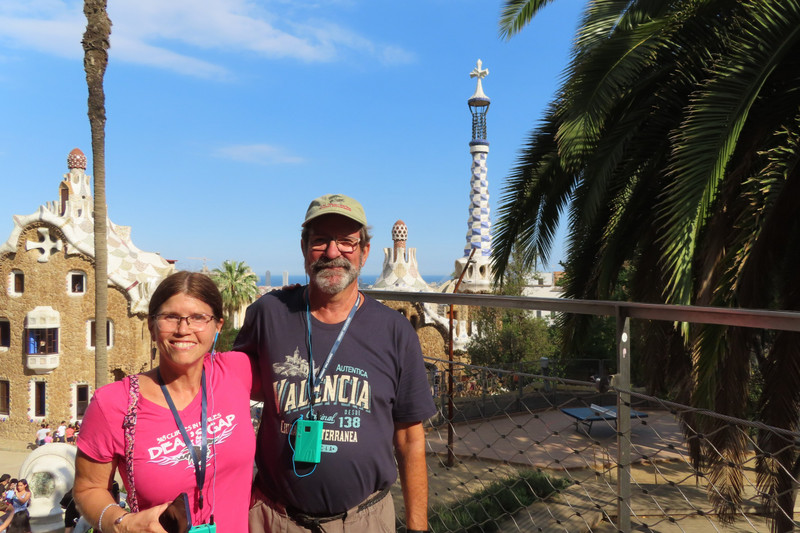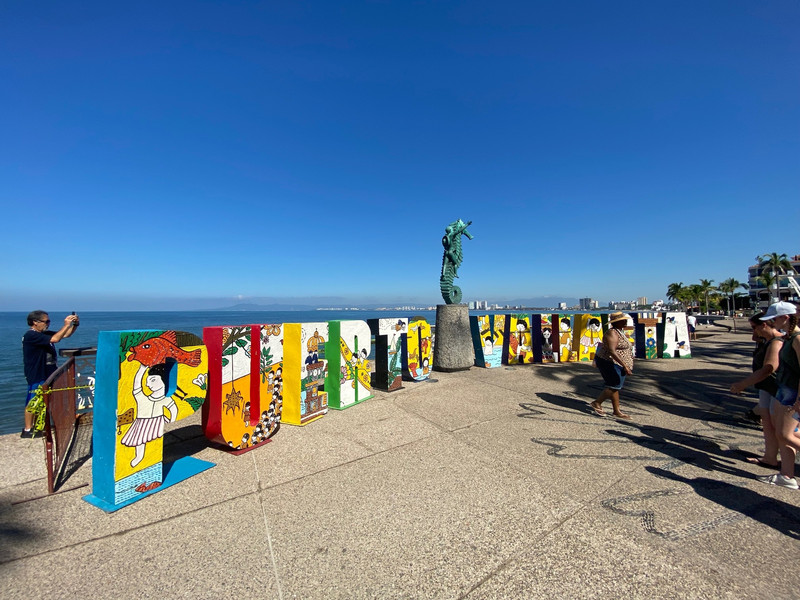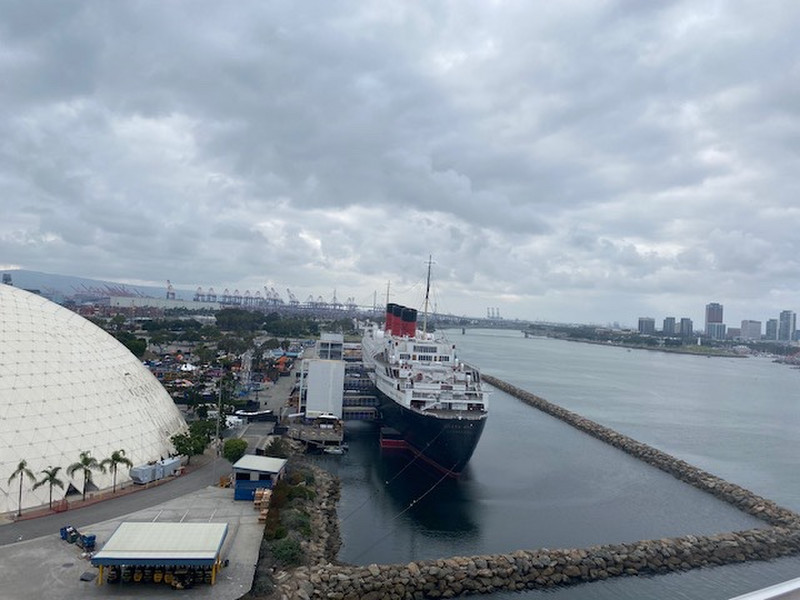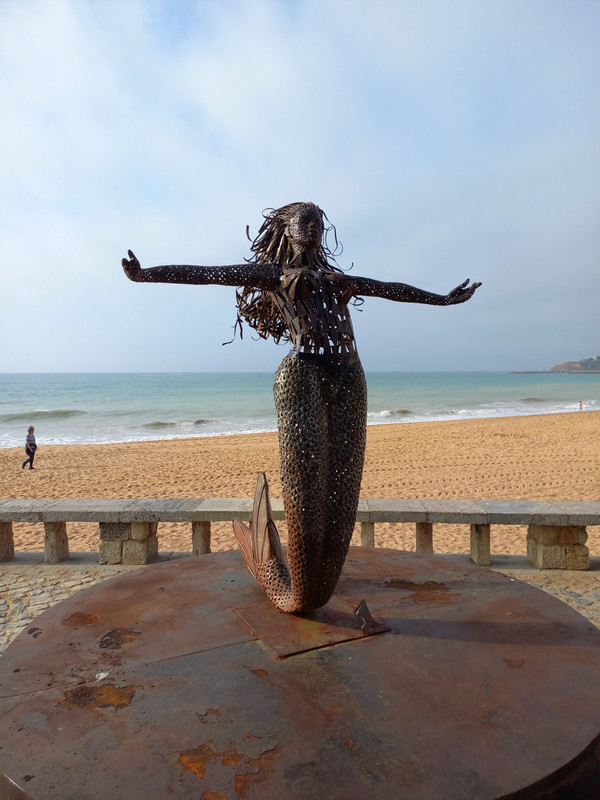Today we left for our final destination – Barcelona. Its another long bus day, theres really no way around it, its a long way from Costa Del Sol to Barcelona, and the last couple of days have been spent on the bus with a couple of one night stants in Granada and Velencia, but tonight we check in for two nights in Barcelona. This time we made a couple of interesting stops along the way.
Our stop was in a little beachfront town of about 8000 people, with the unfortunate name of Peniscola. At first I thought it was the same name as the Florida city Pensacola, but then I looked closer and realized it was actually spelled like Fortunately, the Spanish pronunciation is more like and well leave it at that. When we arrived, people were doing some dance exercise class on the beach, but we just headed to a little outdoor caf for a chocolate croissant and some coffee. As we wandered around after coffee, we noticed the shops beginning to open, shops dont typically open until 10:30am around here. But we did manage to snag a couple of Peniscola before we left.
After another couple of hours on the bus, this time Dom had given us a song request form so we could request songs to be played on the bus. I was afraid we would be inundated with country western music (not our favorite genre) but we were pleasantly surprised with some of our favorites from the past. Our next stop was to at a winery, famous for its local specialty Cava wines. Evidently Cava wine began in this area centuries ago, and has since spread to other areas of Spain, but this winery called Castellroig is located in the Penedes area of Spain and is run by the fifth generation of the Sabate I Coca family and have been making wines since the 18th century. There claim to fame is that they have divided the planting area into 66 plots with 18 different soils, and various grapes on each plot. This allows them to Blend the various flavors of the different grapes to give them the taste they are trying to achieve.
Cava wine is a sparkling wine in either white or red, and it is made here by either the old or new methods, or a combination
of both. Cava wine is first fermented in stainless steel barrels, and then undergoes a second fermentation in the bottle. Traditionally, the bottles are filled and yeast and sugar are added, and the bottles are stored pointing at a downward angle. The sediment from the fermentation collects in the neck of the bottle, and the bottles are rotated a few times a day to stir up the sediment, ensure the and migrate the sediment to the neck of the bottle just under the cork, This is very slow and labor intensive, so the more modern technique is to store the bottles horizontally and us a machine to pick up the bottles, hold them upside down, and them for 48 hours to get the sediment to settle into the neck.
After either technique, the neck of the bottle is frozen, so that the sediment is trapped in the ice, and the bottle is uncorked, and the pressure will blow out the ice and the sediment. The bottle is then filled with wine from the same batch, and recorked. Cava wine is typically aged from 18 months to 90 months depending on the quality. The plant tour was
then followed by a small lunch and a tasting of both the red and white wines. Since neither Jody nor I drink, we had some nice grape juice made from the same grapes, but not fermented.
The other part of the tour that was especially interesting to me was their collection of wine making tools and equipment dating back centuries. They said that their typical 18 month new technique Cava wine costs about 11 Euro per bottle. Most of the others seemed to enjoy the wine, with several people buying bottles to take back with them.
As the tour ended, it was time to get on the bus and continue on to Barcelona. We were only about 30 minutes away, so it didnt take too long. We arrived at the hotel at around 4:00, with instructions to be downstairs by five, so we headed up to our rooms.









